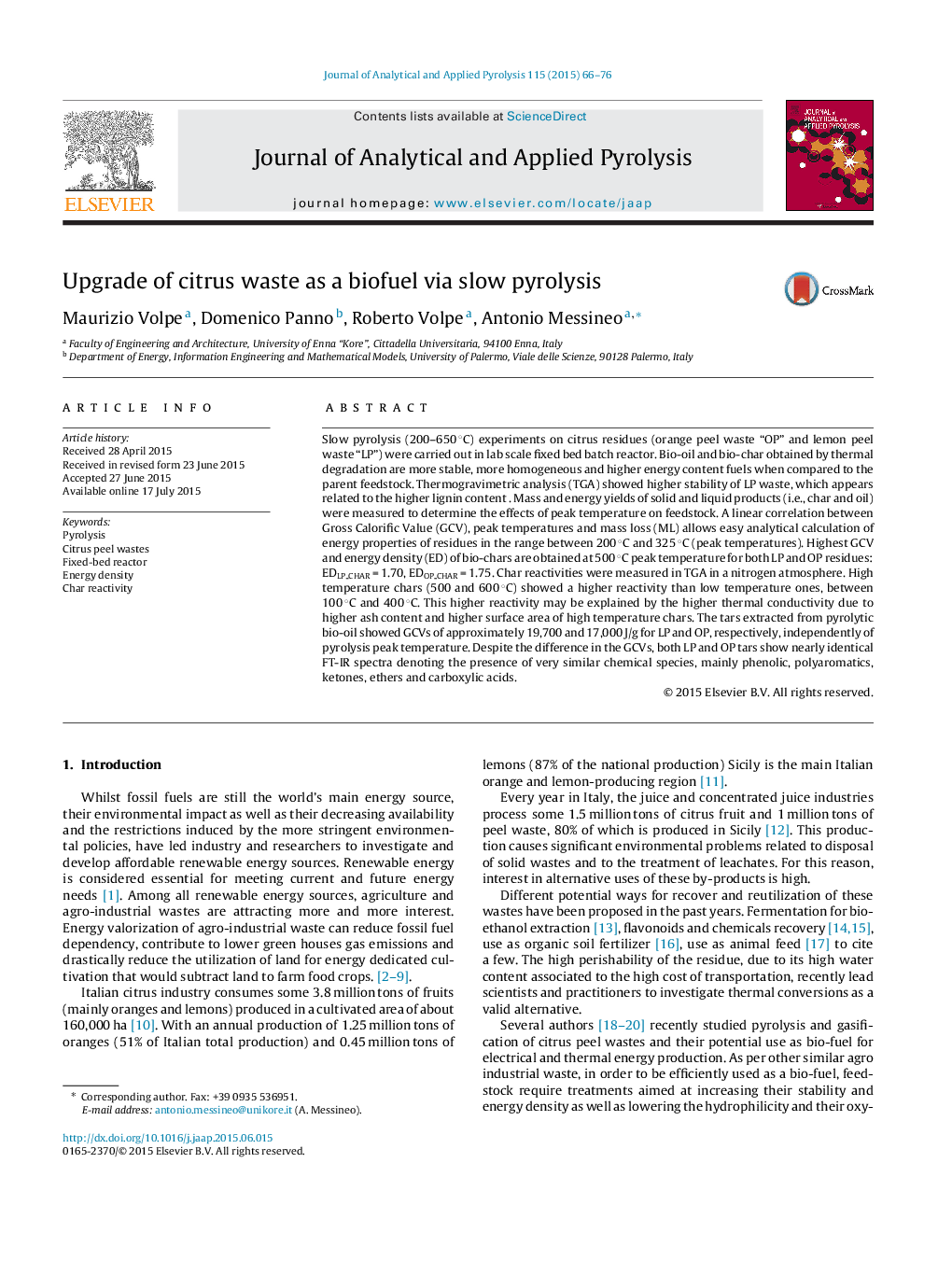| کد مقاله | کد نشریه | سال انتشار | مقاله انگلیسی | نسخه تمام متن |
|---|---|---|---|---|
| 1197079 | 1492962 | 2015 | 11 صفحه PDF | دانلود رایگان |
• Products of lemon and orange peel waste pyrolysis are characterized.
• GCV and mass loss of torrefied residues are linearly correlated.
• Chars may be divided in three main groups with regards to their reactivity.
• High temperature chars are initially more reactive than low temperature ones.
Slow pyrolysis (200–650 °C) experiments on citrus residues (orange peel waste “OP” and lemon peel waste “LP”) were carried out in lab scale fixed bed batch reactor. Bio-oil and bio-char obtained by thermal degradation are more stable, more homogeneous and higher energy content fuels when compared to the parent feedstock. Thermogravimetric analysis (TGA) showed higher stability of LP waste, which appears related to the higher lignin content . Mass and energy yields of solid and liquid products (i.e., char and oil) were measured to determine the effects of peak temperature on feedstock. A linear correlation between Gross Calorific Value (GCV), peak temperatures and mass loss (ML) allows easy analytical calculation of energy properties of residues in the range between 200 °C and 325 °C (peak temperatures). Highest GCV and energy density (ED) of bio-chars are obtained at 500 °C peak temperature for both LP and OP residues: EDLP_CHAR = 1.70, EDOP_CHAR = 1.75. Char reactivities were measured in TGA in a nitrogen atmosphere. High temperature chars (500 and 600 °C) showed a higher reactivity than low temperature ones, between 100 °C and 400 °C. This higher reactivity may be explained by the higher thermal conductivity due to higher ash content and higher surface area of high temperature chars. The tars extracted from pyrolytic bio-oil showed GCVs of approximately 19,700 and 17,000 J/g for LP and OP, respectively, independently of pyrolysis peak temperature. Despite the difference in the GCVs, both LP and OP tars show nearly identical FT-IR spectra denoting the presence of very similar chemical species, mainly phenolic, polyaromatics, ketones, ethers and carboxylic acids.
Journal: Journal of Analytical and Applied Pyrolysis - Volume 115, September 2015, Pages 66–76
